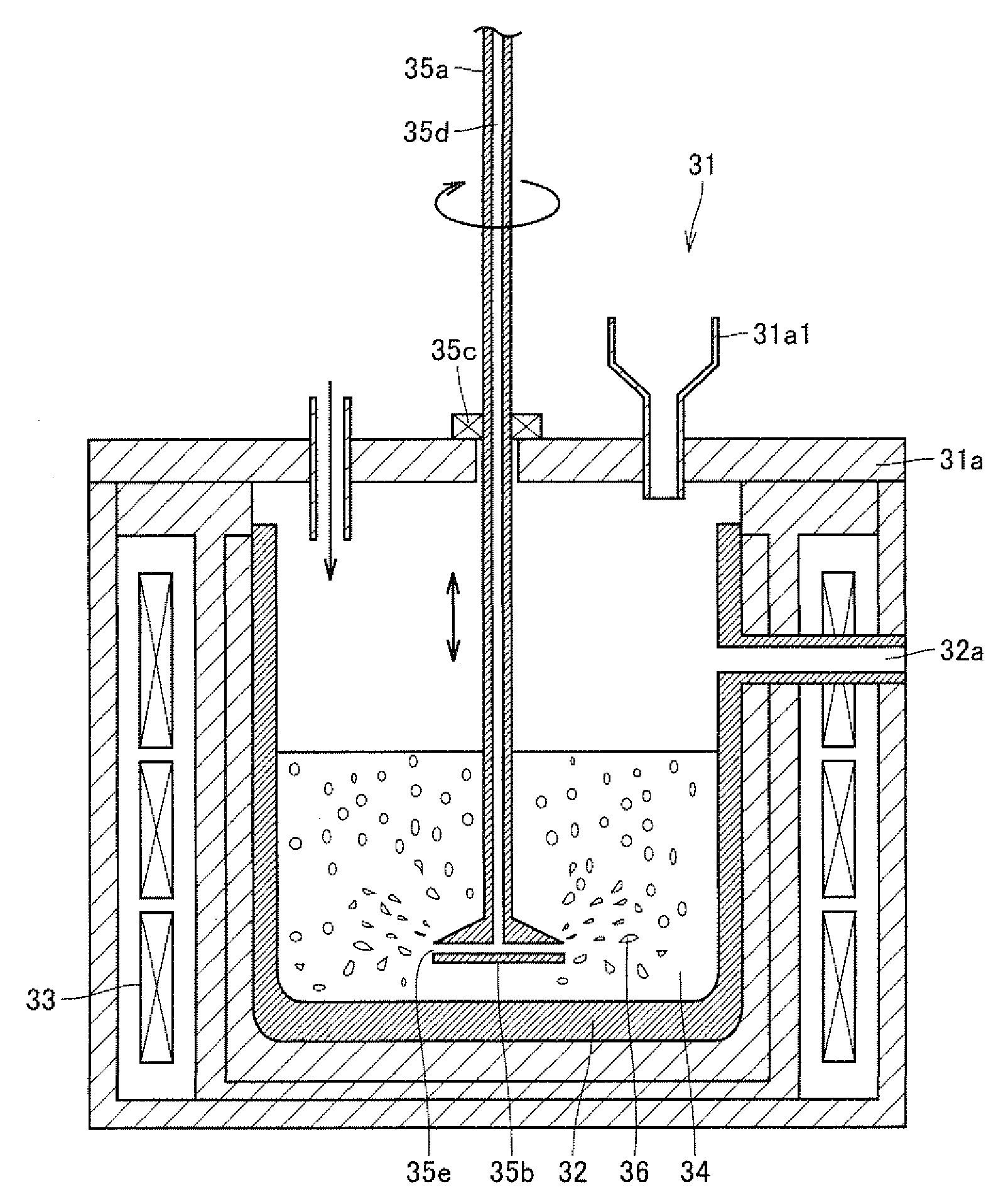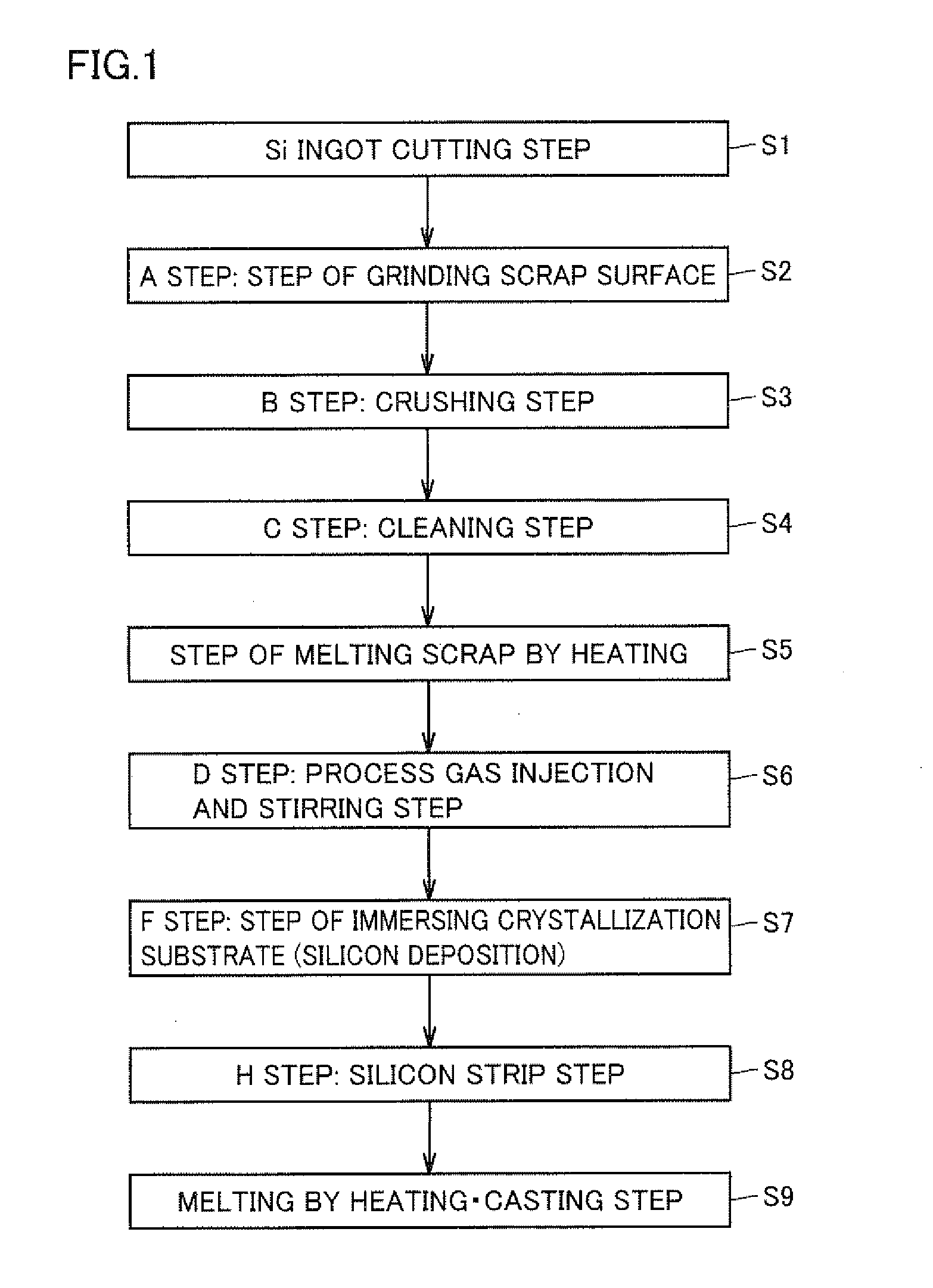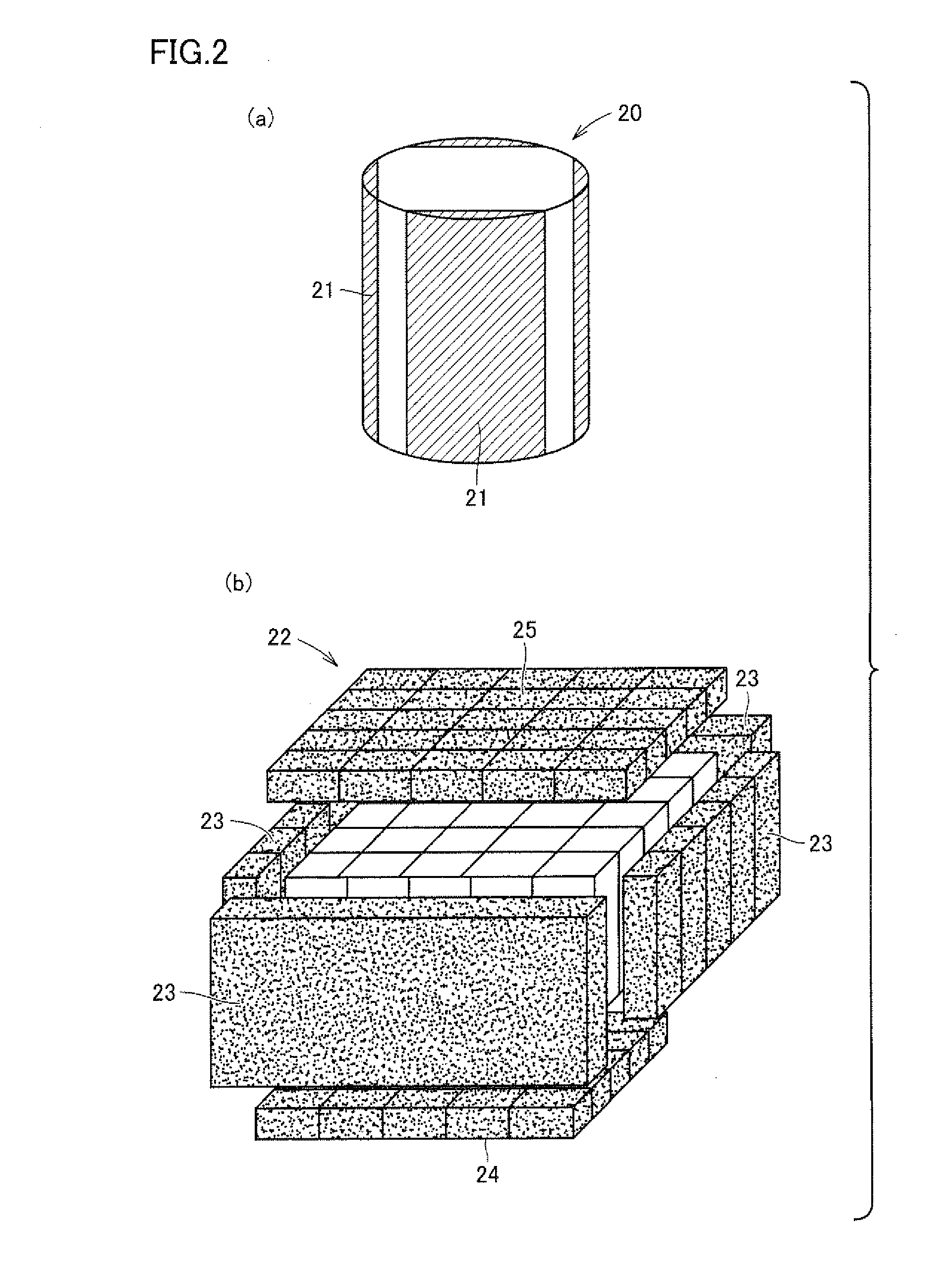Silicon recycling method, and silicon and silicon ingot manufactured with that method
- Summary
- Abstract
- Description
- Claims
- Application Information
AI Technical Summary
Benefits of technology
Problems solved by technology
Method used
Image
Examples
example 1
[0050]FIG. 1 is a diagram showing steps in the silicon recycling method in the present example. In the present example, as shown in FIG. 1, initially, a polycrystalline silicon ingot was cut (step 1) (hereinafter step is referred to as S). Out of removed silicon scraps, the upper surface scrap was subjected to the A step, in which the surface of the scrap was ground by approximately 3 μm with the grinder (S2). Thereafter, the B step was performed to make the size of the scrap small enough to be loaded into the crucible, and the scrap was crushed into a size from 3 to 5 cm with the jaw crusher serving as the crushing device (S3). Thereafter, the C step was performed to clean away and remove impurity such as iron on the surface of the crushed silicon raw material (S4). Cleaning was performed in such a manner that the silicon raw material was put in a stainless basket, the basket was successively passed through the surfactant bath, the water washing bath, the etching bath, and the wate...
example 2
[0057]In the present example, initially, the polycrystalline silicon ingot was cut. Out of the cut away silicon scraps removed by cutting, the upper surface scrap and the side surface scrap were used as the raw material to be processed. Then, the B step was performed to crush the raw material to be processed, such that the size thereof is small enough to be loaded into the crucible. The roll crusher was used as the crushing device and the raw material was crushed into a size from 3 to 5 cm. Thereafter, the C step was performed to remove impurity such as iron on the surface of the crushed silicon raw material, and the raw material to be processed was cleaned. Cleaning was performed in such a manner that the silicon raw material was put in a stainless basket, the basket was successively passed through the surfactant bath, the water washing bath, the etching bath, and the water washing bath each for twenty minutes while being shaken, and the silicon raw material was dried with hot air....
example 3
[0062]In the present example, the process was performed as in Example 1, except that the side surface scrap was used in addition to the upper surface scrap as the raw material silicon and that process gas injection and stirring (D step) was not performed. Here, a mass ratio between the upper surface scrap and the side surface scrap in the raw material silicon was set to 50:50. The silicon resulting from the process was cast to obtain a polycrystalline silicon ingot for solar batteries. Thereafter, the silicon ingot was cut into a block of a prescribed size with the diamond saw to obtain wafers for solar batteries each having a thickness of 200 μm. Consequently, a problem of wire cut due to foreign substances such as SiC did not arise, and it was proved that the silicon scrap is sufficiently recyclable as the raw material silicon for solar batteries.
PUM
 Login to View More
Login to View More Abstract
Description
Claims
Application Information
 Login to View More
Login to View More - R&D
- Intellectual Property
- Life Sciences
- Materials
- Tech Scout
- Unparalleled Data Quality
- Higher Quality Content
- 60% Fewer Hallucinations
Browse by: Latest US Patents, China's latest patents, Technical Efficacy Thesaurus, Application Domain, Technology Topic, Popular Technical Reports.
© 2025 PatSnap. All rights reserved.Legal|Privacy policy|Modern Slavery Act Transparency Statement|Sitemap|About US| Contact US: help@patsnap.com



